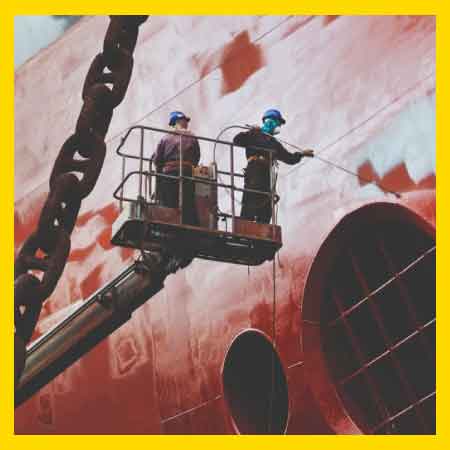Currency
March 23, 2019

Most major incidents and fatalities today are related to working at height, where work is conducted at height without applying the appropriate safeguards. Despite the vast number of regulations, standards, and guidelines, incidents continue to occur.
The information contained in this article is based on a review of technical knowledge, experience, and notable practices from oil and gas industries. It is important for all organisations to establish a standard to ensure nobody falls and hopefully bring about a significant reduction in the number of work at height related injuries.
The establishment of minimum expectations on safe behaviours and practices
Increasing awareness of WAH hazards and control measures
Implementing safety systems with adequate controls and/or checks and balances
Utilising adequate controls to verify that the expected behaviours, practices, and systems are followed
All company workers working in elevated areas where the risk of injury from falls exists are considered to be working at height. According to the latest statistics from the UK’s Health and Safety Executive (HSE), working at height was the most frequent cause of fatal accidents to workers in 2017, and accounted for 28% of all total workplace injuries. This research also revealed, however, that there were 43,000 nonfatal accidents involving falls from height across all industries. Also, over 60% of deaths during work at height were found to involve falls from ladders, scaffolds, work platforms and roof edges, and through fragile roofs etc. The major causes of this type of accident involving working at height include the incorrect use of ladders and stepladders, overstretching from ladders, and standing on benches or chairs to reach high surfaces. Work at height accidents could also involve equipment such as mobile elevated work platforms (MEWP) and suspended access equipment such as window cleaning cradles.
The question to ask is how could a business keep its workers safe, and stay compliant with its legal and regulatory obligations? Employers should use a good safety management system to identify work at height tasks and put in place measures to prevent falls before work at height starts. Work at height also encompasses the risk of falls from low heights where a person could be injured, as well as the more obvious risk of falling from elevated heights.

On fragile roofs such as asbestos cement roofs without precautions or proper means of access, which can lead to serious and fatal accidents
Outside of approved scaffolding (the individual’s centre of gravity could potentially extend beyond the vertical plane of a properly constructed safety barrier or guardrail); on any type of suspended scaffolding; when erecting, dismantling, or repairing scaffolding
At heights greater than 1.8m/6ft above the surrounding ground or work surface when no guardrails exist; when in proximity to the edge of elevated floors, floor openings, or roofs (greater than 1.8m/6ft) with no guardrails or wire rope railing
On all scaffolds with incomplete decking or an incomplete guardrail
When removing floor planks, hole covers, grating, etc.; on roofs with slopes steeper than 20%
Riding in or working from spiders and sky-climbers; in areas exposed to impaling hazards where the potential for injury exists by falling on them, even when the height is less than 1.8m/6ft
From or travelling in powered work platforms or personnel lifting/hoisting devices (personnel transfer baskets such as Billy Pugh’s are excluded)
As a worker, protecting yourself from the risk of falling from height is very important, and you should know the risks in your workplace. When the risk is unavoidable, the safety hazards in your work area should always be considered in the selection of equipment. This would assist both employers and employees in selecting the right equipment required to work at height.
The information contained in this article is based on a review of technical knowledge, experience, and notable practices from oil and gas industries. It is important for all organisations to establish a standard to ensure nobody falls and hopefully bring about a significant reduction in the number of work at height related injuries.
Many organisations have achieved this already, through:
All company workers working in elevated areas where the risk of injury from falls exists are considered to be working at height. According to the latest statistics from the UK’s Health and Safety Executive (HSE), working at height was the most frequent cause of fatal accidents to workers in 2017, and accounted for 28% of all total workplace injuries. This research also revealed, however, that there were 43,000 nonfatal accidents involving falls from height across all industries. Also, over 60% of deaths during work at height were found to involve falls from ladders, scaffolds, work platforms and roof edges, and through fragile roofs etc. The major causes of this type of accident involving working at height include the incorrect use of ladders and stepladders, overstretching from ladders, and standing on benches or chairs to reach high surfaces. Work at height accidents could also involve equipment such as mobile elevated work platforms (MEWP) and suspended access equipment such as window cleaning cradles.
The question to ask is how could a business keep its workers safe, and stay compliant with its legal and regulatory obligations? Employers should use a good safety management system to identify work at height tasks and put in place measures to prevent falls before work at height starts. Work at height also encompasses the risk of falls from low heights where a person could be injured, as well as the more obvious risk of falling from elevated heights.

Some of the common areas of concern for work at heights include working:
As a worker, protecting yourself from the risk of falling from height is very important, and you should know the risks in your workplace. When the risk is unavoidable, the safety hazards in your work area should always be considered in the selection of equipment. This would assist both employers and employees in selecting the right equipment required to work at height.









